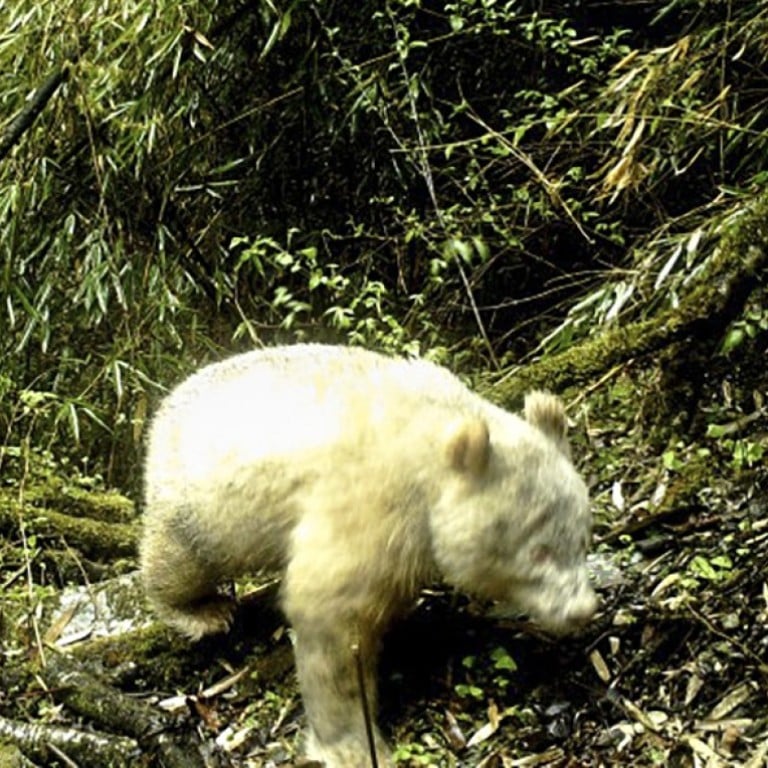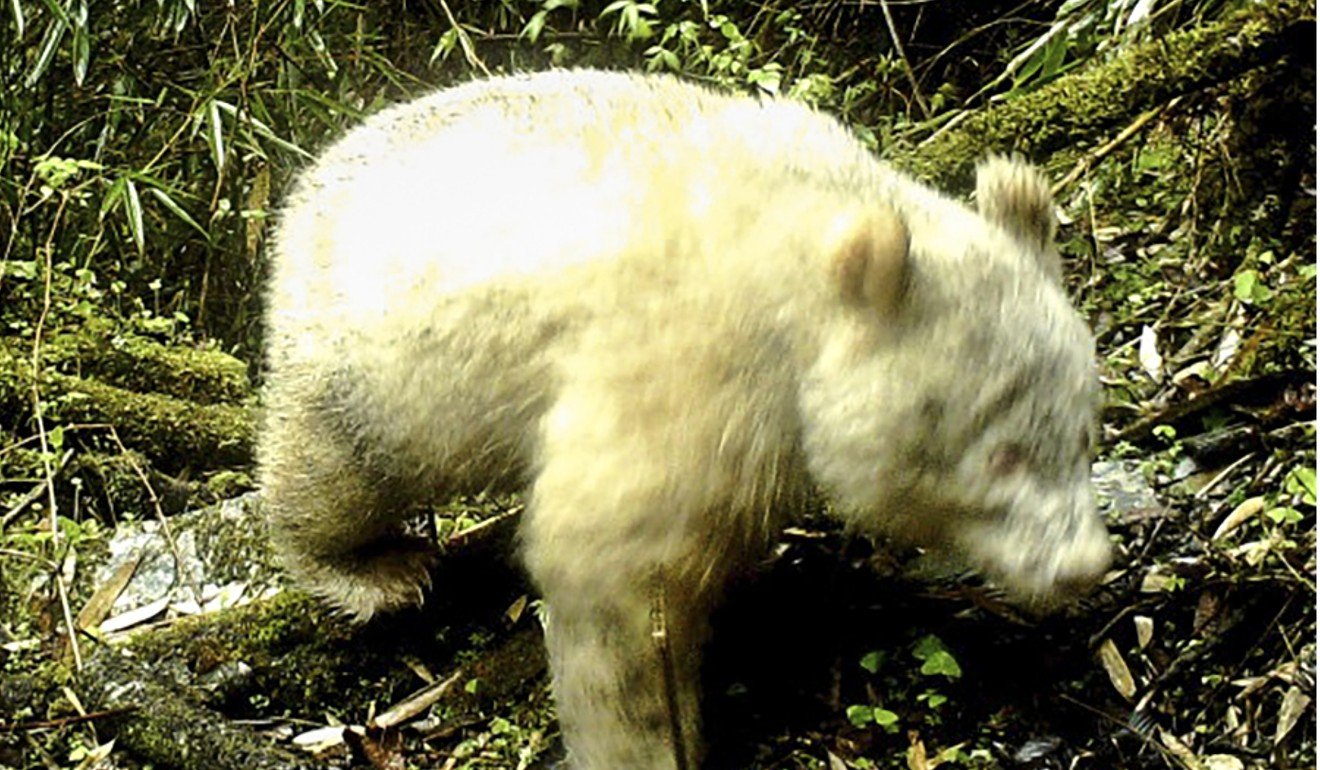
Chinese nature reserve releases world’s first image of an albino giant panda in the wild
- All-white beast spotted wandering through the Wolong National Nature Reserve in Sichuan province
- Bear is probably one or two years old and looks perfectly healthy, scientist says
China on Saturday released the world’s first ever photograph of an albino giant panda in the wild.
The image of the bear walking through the Wolong National Nature Reserve in the southwestern province of Sichuan last month was captured by a motion activated camera at an altitude of about 2,000 metres above sea level, China News Service reported.
It clearly shows the animal’s unique physical characteristics including its snowy white hair and claws, and red eyes.
“This is the first time a fully albino wild giant panda has been caught on camera, indicating there must be a gene mutation in the giant panda population,” Li Sheng, a researcher at Peking University’s School of Life Sciences, was quoted as saying.

“Judging from the photo, the panda is physically strong and taking steady steps, suggesting the gene mutation is not affecting its normal life.”
While the mutation was not harmful to the panda in physiological terms, Li said it did have some downsides such as the bear being more conspicuous in its environment and being more sensitive to the sun.
China creates facial recognition app – for pandas
It would not have a significant effect on the panda’s activity or ability to reproduce, he said, adding that the animal was probably between one and two years old.
Officials from the nature reserve said they would install more motion cameras to help monitor the rare bear’s growth and interactions with the rest of the panda population, and to see if it produced any offspring.
The albinism mutation is recessive so would only appear in the bear’s offspring if both parents had it, the report said.

